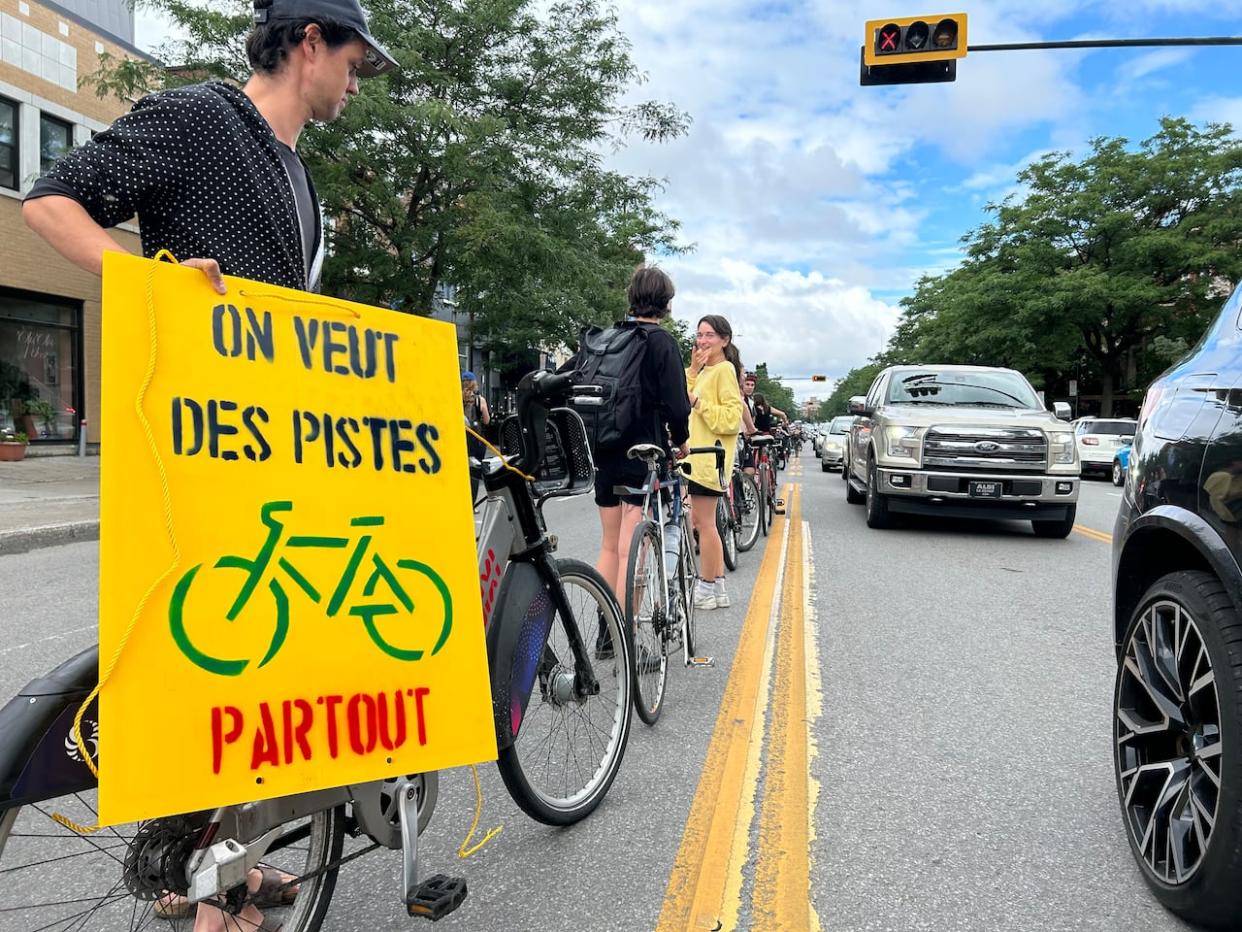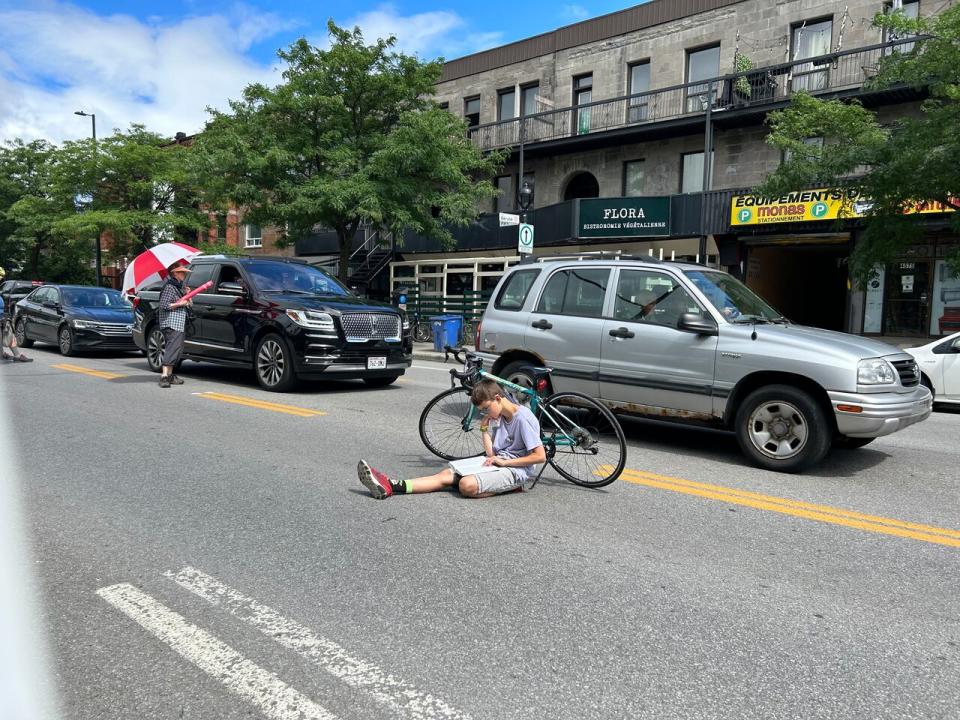Montrealers form 'human bike lane' to raise safety concerns for cyclists

Too often has Patrick Vinsentin witnessed cycling accidents on Montreal's Parc Avenue, just around the corner from where he lives in the Plateau-Mont-Royal borough.
He says although only fatal collisions make the headlines, the amount of bike accidents that happen there points to how dangerous the avenue is for cyclists.
"It's kind of like having a small piece of the Décarie in your neighbourhood," said Vinsentin, referring to the expressway that runs through Montreal's west end.
He was one of several protesters who took over a lane of Parc Avenue on Saturday morning, temporarily turning it into a protected bike path.
Cyclists and their allies lined up along the street starting at the intersection of Parc and Mont-Royal avenues where a "ghost bike" commemorates Andrea Rovere, a cyclist who died in September 2021 after being hit by a truck.
The makeshift "human bike lane" stretched a couple blocks north in an attempt to reach another bike painted entirely in white and adorned with flowers marking the spot where Suzanne Châtelain died almost exactly a decade ago while riding her bike.
Hers was the first ghost bike installed by Vélo Fantôme, the organization behind Saturday's protest.

Séverine Le Page is a spokesperson for Vélo Fantôme, an organization that creates memorials for cyclists who died while biking. She says she's hopeful Parc Avenue will have a protected bike lane someday. (Rowan Kennedy/CBC)
"We talk about these collisions and then nothing happens so it has to change," said a spokesperson for the organization Séverine Le Page.
An avid cyclist herself, she says she doesn't feel safe biking down Parc Avenue and would never let her kids share that road with vehicles.
Éric Lévesque agrees. He used to live in the area and found it difficult to avoid the avenue since it was the shortest path to the city's downtown for him. Otherwise, he'd have to make an awkward detour to reach St-Urbain Street a few blocks over where the bike lane is "just a line of paint," he says.
The next option is Clark Street's segregated bike lane, which Lévesque describes as "slow" due to the many stop signs along the way.
He came to the protest with his two kids seated patiently in a trailer fixed to the front of his bike to show that people of all ages use the city's bike path network.
"You can live your whole life in a vehicle like this with your family and go anywhere as long as the roads are safe," he said.

A bike painted entirely in white, known as a "ghost bike," marks the spot on Parc Avenue where Suzanne Châtelain died a decade ago. (Rowan Kennedy/CBC)
No bike lane in the works for the avenue
Plateau-Mont-Royal Coun. Marie Plourde met with protesters Saturday, bike in hand. She said she understood and even shared some of their concerns but couldn't say if a segregated bike lane was coming to Parc Avenue.
"This is really a complicated issue, but we really want to do something and something permanent," she said.
The city's biking infrastructure plan, which is usually updated every four years, has no indication of a new bike lane on Parc Avenue north of Mont-Royal Avenue.
According to the plan and Plourde, the bike path on Côte-Sainte-Catherine Street will be extended to connect with the existing bike lane south of Mont-Royal Avenue along Jeanne-Mance Park.

A boy reads a book while holding the 'human bike lane' during a protest organized by Vélo Fantôme Saturday. (Rowan Kennedy/CBC)
Plourde also says she plans to protect St-Urbain's bike path and that she's asked the provincial government to install speed cameras as a traffic-calming measure at the intersection of Parc and Mount-Royal avenues.
Le Page says she remains hopeful for a bike lane on Parc Avenue, adding that ultimately it would benefit everyone — not just cyclists.
"It gives more space to everyone," she said. "It reduces the amount of traffic that can travel through, and it's just much safer."
Since Châtelain's death, Vélo Fantôme has installed 17 more ghost bikes in Montreal, according to the group's website.


